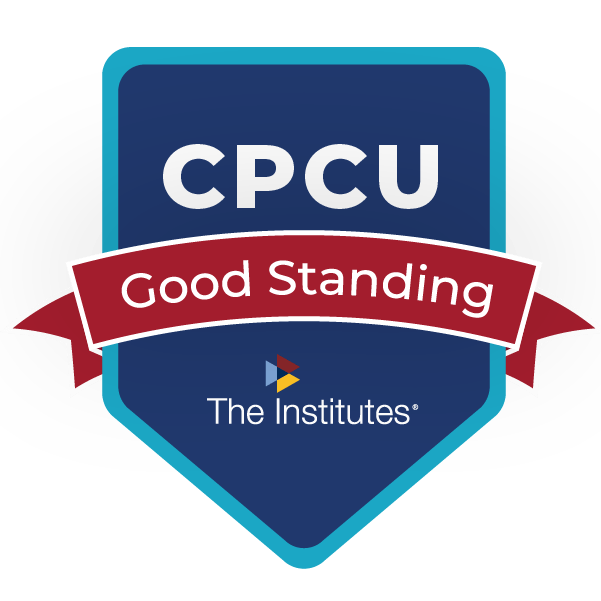Social Justice “Living Legend” Talks Structured Settlements
Greetings Fellow Supporters of Justice!
Today’s featured video highlights comments of esteemed Civil Rights Leader, the Hon. John Lewis (D-GA), in his address before the National Structured Settlements Trade Association a few months ago.
Recipient of more than 50 honorary degrees and countless awards for his dedication to the Civil Rights Movement, Rep. Lewis personifies the term “living legend.”
Leader of the pivotal 1965 “Bloody Sunday” Selma to Montgomery March and the only living “Big Six” speaker from the March on Washington for Jobs and Freedom where Martin Luther King, Jr. delivered his famous “I Have a Dream” speech, Rep. Lewis has been a tireless advocate for social justice since he was a teenager.
In addition to expressing heartfelt appreciation for attorneys, this distinguished, humble role model shared two stories that support his belief that Structured Settlements can play a key role in helping advance social justice today.
Structured Settlements can help provide an “opportunity to fulfill the American Dream.” Rep. John Lewis
Congressman Lewis’ talk took on special meaning for me personally as my Structured Settlement practice evolves. Earlier this year, I wrote about helping two men structure their wrongful imprisonment civil suits following their exoneration after serving thirteen years in prison for crimes they did not commit. (See e-newsletter entitled: “Never Give Up” on our website)
Structured settlements help people!
For those emerging from incarceration, many of whom were arrested as young men and women, reasonable employment prospects are often dim since they have never been part of any civilian work force. For these deserving people who frequently encounter undeserved stigma, Structured Settlements can serve an even more vital role in helping them achieve the American Dream denied them.
Rep. John Lewis surely thinks so. And social justice in one thing Rep. Lewis surely has a perspective on.
Enjoy the video and, as always . . .
Posted: August 25, 2010 | Category: Blog, Newsletter, Structured Settlements | Comments Off on Social Justice “Living Legend” Talks Structured Settlements
Structured Settlement Talk: Bonds, Not James Bonds
Bonds and Structured Settlements: No More Tears
For those who remain unconvinced that Structured Settlements are still “a good deal” in today’s economy, it’s worth noting how other financial professionals view bonds and bond-based instruments such as Structured Settlements.
First, a brief comment on how structured settlement companies arrive at their rates. And I do mean brief.
Bonds.
OK, that may be a bit of an oversimplification but suffice it to say the portfolios of life companies offering structured settlements generally include a significant percentage of quality bond holdings. That’s because life companies are strictly regulated by the states and must meet certain risk-based capital and other requirements in the interest of consumer safety.
For the past twenty years or so, state regulators have limited what life insurers (including those offering structured settlements) can invest in. Years ago, companies could get away with reaching for higher yields by investing in riskier instruments like junk bonds.
Thankfully those days are long gone.
Today, take a look at any company offering structured settlements and you will likely find a portfolio containing 80% or more of investment grade bonds. The balance in cash, short term investments and other “sensible” assets with minimal, if any, exposure to anything considered high risk makes for a very safe bet.
One small difference. Structured settlement rates of return usually exceed bond rates by quite a few (often fifty or more) basis points!
Which brings us back to the original topic. A recent article entitled “The Age of No More Tears Investing,” which appeared in a recent edition of Fortune magazine, quotes a number of financial experts who seem to think quite a bit of bonds these days.
Click HERE to read “The Age of No More Tears Investing”
Add it all together and you have a formula that goes something like this:
If Bonds = Safe, and
Structures = Backed Mostly By Bonds, and
Financial Experts = Touting Bonds as Good, and
Structure Rates > Bond Rates, Then
It stands to reason that:
Structures = Safe + Good 4 You!
OK, so maybe my theorem needs a little re-working but you get the gist. Good economy, bad economy. Whatever the case, structured settlements are a solid choice for those seeking safety and solid performance commensurate with the risk.
Naturally, it all depends on the numbers so please call if you’d like some comparison quotes or to let me know what I can do to help. Nothing beats an informed decision. Wishing you continued success and . . .
Posted: August 17, 2010 | Category: Blog, Newsletter, Structured Settlements | Comments Off on Structured Settlement Talk: Bonds, Not James Bonds
National Structured Settlement Advocacy Group Elects Dan Finn President
Press Release: National Structured Settlements Trade Association Elects Dan Finn Its Next President
I am proud and humbled to be writing to you today to announce that I recently was elected to serve as the incoming president of America’s premier advocacy group dedicated to protecting and preserving the tax benefits associated with structured settlements for personal, physical injury victims.
Click HERE to read the Press Release.
That my industry peers thought enough of me last year to elect me to our organization’s Board of Directors was gratifying enough. But when the elected Board members collectively drafted and elected me to lead the organization as its next president, the honor was magnified.
Although my term doesn’t officially begin until 2011, I am already fully engaged with a committed Board of Directors and Management Team that is working to ensure that structured settlements, and the tax advantages that accompany them, remain a viable settlement option for people anticipating settlements for personal, physical injury and wrongful death claims.
For 25 years, the National Structured Settlements Trade Association (NSSTA.com) has led the charge to engage the public on dialog necessary to ensure the continued success of structured settlements. I pledge to do my part to continue this fine tradition.
Through the collective efforts of ALL the professional stakeholders – accident victims themselves, attorneys, mediators, judges, insurance companies, members of Congress and my fellow structured settlement professionals – we can continue to help secure the futures of those who need it most.
I am committed to making sure clients continue to have this unique option for guaranteed future security available to them. Please feel free to contact me personally should you ever have a matter that you feel deserves greater emphasis in this important area.
Posted: July 29, 2010 | Category: Blog, Newsletter, Structured Settlements | Comments Off on National Structured Settlement Advocacy Group Elects Dan Finn President
WSJ Sheds Light on “After Market” Structured Settlements
You’ve seen the late night TV commercials. You can get “CASH” for your structured settlement payments NOW!
“Let us help you out of that burdensome, extremely attractive and secure guaranteed income tax-free cash flow you are receiving,” the paid spokesperson suggests. “We understand your problem and will give you the money YOU deserve such is our benevolence!”
In a perfect world, the spokesperson would, at this point, grow horns and start laughing maniacally. I imagine the scene from Planes, Trains and Automobiles where John Candy and Steve Martin get wedged between two semi-trucks while driving the wrong way down the highway.
But the world is imperfect and people aren’t always able to see the truth that often lurks behind a well-crafted advertisement that is, most would argue, designed to exploit.
In this rare weekend edition of our newsletter, I’m writing to praise financial columnist Jason Zweig for his article which appeared in today’s edition of The Wall Street Journal shedding necessary light on the emerging practice of selling factored structured settlements.
Click HERE to read “Another Can’t Miss Deal That Can Miss Spectacularly”
In an odd way, the fact that a secondary market has spawned from a secondary market speaks volumes about the attractiveness of the structured settlements in the first place.
It suggests, to me at least, that investors would love to be on the receiving end of an original structured settlement.
Trouble is, since structured settlements are only available to people settling a personal, physical injury claim, they are not available for purchase directly. That is unless they are purchased, after the fact and “at a deep discount” as the article points out, by companies wanting to capitalize on their original attractiveness.
Although the article steers clear of the ethical issues surrounding investors who make money off of people who have suffered physical trauma, it seems appropriate that the lone graphic used in the article shows a turkey vulture roosting on a yield sign.
For more perspective on this theme, clients may wish to revisit a few of the videos we have posted on our website under the “What They’re Saying” tab. Specifically, those of Sen. Richard Durbin and Rep. Joe Courtney (videos 5 and 6) of the United States Congress both of whom are former trial attorneys who strongly support structured settlements and are opposed to factoring.
Posted: July 24, 2010 | Category: Blog, Newsletter, Structured Settlements | Comments Off on WSJ Sheds Light on “After Market” Structured Settlements
Structured Settlement Talk: You, Me and Those Darned Assumptions
A few days ago, an attorney client-friend I hadn’t spoken with in awhile called for some structured settlement proposals.
“Business must be terrible since rates are so bad, right?”
I acknowledged some cases recently where clients who were excellent candidates for guaranteed tax-free income desperately needed cash to stave off foreclosure, support a laid-off spouse, make up for lost savings, etc.
But he was surprised when I told him that our overall business activity is about on par with activity in the pre-Recession days before money seemed to evaporate overnight. After all, some people will always choose guaranteed, tax-advantaged income regardless of what the rest of the economy is doing. They’re just wired for safety and security.
“How can that be with interest rates so low?” he wondered. “Structured settlements can’t be paying more than, what, 1 or 2 percent?”
I smiled. This was not the first time I had heard this.
Oscar Wilde Was Right*
His client was a 55 year-old male whose marginal income bracket was still quite high because both spouses, fortunately, still worked. He planned to continue working to his normal retirement age of 65.
Furthermore, this person’s 401(k) had taken such a hit the past few years that he vowed never again to buy another stock. He was coming to that point in life where he needed to shift his risk tolerance anyway so had asked his attorney, a wise money-man himself, if he knew of anything “sensible” he could do with his settlement money.
I ran a quick quote that revealed his client could receive guaranteed lifetime income beginning at age 65 (a 10-year deferral) that resulted in a 4.35% tax-free rate of return based on full life expectancy. Factoring the client’s high estimated tax bracket into account, his tax-equivalent yield was over 7.50%.
It’s worth noting that the “real” (inflation-adjusted) rate of return for the S&P 500 from 1950-2009 is 7.0% according to data collected by Robert Shiller from Yale University for his book Irrational Exuberance.
Surprise!
The attorney was amazed! This was significantly better than he had been expecting. So much so, that he realized that maybe it was time for him to start thinking about resuming the structuring of his fees going forward.
I told him I was glad I could change his assumption and assured him I’d be here whenever he was ready to resume structuring his fees.
Thoughts From a Bond Guru
Clients may wish to heed the insights of “Bond Guru” Bill Gross, manager of the world’s largest bond mutual fund. In a recent Money magazine article, he talks about how people need to adjust to the “new normal,” which he defines as “an era of slow growth and lower returns on stocks, bonds and everything else.”
Click HERE to view the article “What the bond guru sees coming”
Gross essentially suggests that people cut their return expectations in half. Instead of expecting 10% returns on stocks, expect 5%. Expect 4% on bonds. Etc.
Final Comments
In the structured settlement business, we’re telling clients who will need money in the very short term they should NOT structure that portion of their settlement proceeds. (Exceptions: Some taxable settlements, attorney fees and Structured Sales).
But for those who seek long-term financial security, we have yet to find anything that compares to the benefits of a properly crafted structured settlement. The tax-advantage coupled with the uber-secure nature of structured settlements make for a terrific combination.
Tough as it is to get used to this “new normal,” those who adapt will surely survive and thrive. And we look forward to being here to help you through the transition.
Posted: July 20, 2010 | Category: Blog, Newsletter, Structured Settlements | Comments Off on Structured Settlement Talk: You, Me and Those Darned Assumptions
Structured Settlement Talk: New York Life Improves Attorney Fee Choice
Product Enhancement Announcement From: New York Life
Fixed Annuity Leader Now Accepting “Stand-Alone” Structured Attorney Fees!
Plaintiff attorneys in the know have been structuring their fees for many years. They have long valued the certainty, the security and the tax advantage that comes from deferring fees into a future year.
New York Life has always been a popular choice among the many excellent life markets offering structured attorney fees. But until this month (June, 2010) attorneys could only structure their fees with New York Life if their client structured part of their settlement proceeds.
I am extremely pleased to announce that this restriction has now been lifted.
Attorneys who wish to structure their fees with New York Life may now do so even if their clients choose to accept their settlement in cash provided the underlying claim qualifies under IRC 130 as a personal, physical injury case.
Why is This Worthy of Special Mention?
Four reasons:
- This inclusion means that now, ALL Structured Settlement life markets now offer stand alone structured attorney fees. This further reinforces the viability of structuring fees from a tax perspective;
- New York Life was the market leader in fixed annuity sales in the first quarter of 2010 according to the recently released Beacon Research Fixed Annuity Study. They topped the list with over $1.7 Billion in fixed annuity sales;
- New York Life is one of the few companies that can boast top ratings from all four major rating agencies: A. M. Best, Moody’s, Standard & Poor’s and Fitch;
- Ultra-conservative attorneys who regularly structure their fees like having an assortment of structured fees spread among several different life markets. Having New York Life now available when their clients “cash out” adds another option.
Practitioners seeking to secure their futures can gain a terrific financial advantage by structuring their fees. Because it’s vitally important to follow the established sequence of events in order to preserve the tax advantage, be sure to call me before your case settles to make sure everyone is in compliance. Certain underwriting limitations may apply and attorneys are naturally encouraged to seek their own independent tax advice.
To learn more about how valuable this strategy can be or to receive a structured attorney fee quote, call anytime. In these tumultuous financial times, who among us couldn’t use a little extra financial security?
Posted: June 29, 2010 | Category: Blog, Newsletter, Structured Settlements | Comments Off on Structured Settlement Talk: New York Life Improves Attorney Fee Choice
Structured Settlement Talk: Woe is Muni
Munis May Be Losing Some Luster
Long touted as the ultimate secure choice for investors seeking tax-free income, some municipal bonds may be creeping up the risk ladder according to an article which appeared online yesterday at money.cnn.com.
In his article, “Is there a muni bomb in your portfolio?,” staff writer David Ellis reports that a number of cities have had their credit ratings cut. As a result, especially when coupled with the current general economic malaise, some municipal bonds could end up “virtually worthless.”
Not good news for people who are counting on that money.
Even bazillionaire Warren Buffett (who knows a thing or two about money) is quoted as saying municipal debt woes could become a “terrible problem” in the future.
Click HERE to read “Is there a muni bomb in your portfolio?”
This article caught my eye since I can recall, over the years, many people who settled their personal, physical injury claims rejecting the income tax-free structured settlement option available to them in favor of cash so they could buy tax-free munis which they perceived as safer.
I will not argue against the wisdom of choosing something viewed as so historically safe but I hope this article provides some perspective for those who think munis are always a slam dunk. Structured settlements offer a sensible alternative.
Structured settlements remain an excellent choice for those who qualify and seek guaranteed, income tax-free cash flows! Please call anytime I can help you or anyone you know evaluate ALL the choices available before settling a personal, physical injury claim.
Posted: June 18, 2010 | Category: Blog, Newsletter, Structured Settlements | Comments Off on Structured Settlement Talk: Woe is Muni
Structured Settlement Talk: Too Old for Financial Security?
Think Again, My Mellowing Friend!
I recently participated in a mediation where the plaintiff attorney denied his client an opportunity to structure her settlement because his client was “too old.”
She was 59.
While 59 years of age may have been considered “too old” to think about lifetime financial security in another era (like, maybe 1743), all professionals involved in the personal injury tort process — defense and plaintiff attorneys, claims representatives, judges, mediators, etc. — should consider the following before making generalizations about the appropriateness of a structured settlement for people with perhaps a touch of grey:
I. Playing the Percentages
Authors Eric Tyson and Bob Carlson cite “Underestimating Life Expectancy” as one of the eleven mistakes to avoid when planning your retirement in their new book “Personal Finance For Seniors For Dummies.” According to Tyson,
“A retirement of 20 years will be routine for those retiring in their early to mid-60s today. A significant number will be retired for 30 years and longer. Some may even spend more time in retirement than they did working.”
Age 59 may be too old to think about starting a professional career in ballet but anyone who thinks this is too old for a structured settlement is missing a great opportunity. Who among us couldn’t benefit from guaranteed, tax-advantaged cash flow that can never be outlived?
II. Centenarians Unite!
The U. S. Census Bureau projected recently that, by the year 2020, 7.3 million Americans alive will be aged 85 or older. The fastest growing segment of this fast-growing demographic? Centenarians! The ranks of those living to be 100 years old is growing 7% per year and will number nearly a quarter million within the decade.
I’m still a few years away from hitting this particular milestone myself but I’m guessing it would be a whole lot more fun having money when you turn 100 than being without. Lifetime annuities provide secure, guaranteed cash flow on a tax-advantaged basis.
III. More On Longevity
Finally, in case you missed it, I highlighted a number of other statistics that make a compelling case for choosing a lifetime annuity in an earlier newsletter. Before leaving, be sure to:
Click HERE to check out our newsletter “Live Longer . . .. Buy Annuities.”
I continue to be amazed at how many people incorrectly assume that structured settlements are only appropriate for kids. What a shame. What a wasted opportunity!
Summary
There may very well be legitimate reasons why a structured settlement is not an appropriate choice for someone anticipating a personal injury settlement. But before rejecting it out of hand for all the wrong reasons, practitioners are encouraged to consider the wealth of empirical data available to help them make an informed choice for their unique situation.
We can help you! Whether you’re a plaintiff attorney looking to augment your retirement or a claims professional seeking to recreate a plaintiff’s future work-life cash flow needs, please call anytime to let us help you decide if a lifetime annuity is appropriate.
Posted: May 17, 2010 | Category: Blog, Newsletter, Structured Settlements | Comments Off on Structured Settlement Talk: Too Old for Financial Security?
NFL Players, Dementia and the CA Workers’ Comp System
Ex-NFL Players Find Safe Haven in the California Workers’ Compensation System: Is Dementia an Occupational Hazard?
An interesting article, published April 5, 2010 by The New York Times highlights the plight of former NFL lineman Ralph Wenzel who, at age 67, now lives in an assisted living facility due to dementia allegedly caused or aggravated by his years playing football for the Pittsburgh Steelers and San Diego Chargers.
Click HERE to read The New York Times article.
Be sure to take time to watch the sad, seven minute video also embedded in the article.
This first-of-its-kind Workers’ Compensation claim, filed with the California WCAB in Van Nuys on April 5 of this year, could have far-reaching implications. Many will be watching this case closely. The article also goes into some detail about the uniqueness of the California WC system as it pertains to all NFL players, not just those suffering from dementia.
I hope you enjoy the article. Please let me know if I can answer any questions and be sure to call anytime I can help you with a structured settlement.
Posted: April 7, 2010 | Category: Newsletter | Comments Off on NFL Players, Dementia and the CA Workers’ Comp System
The Truth Behind Structured Settlement Buyouts
“I Want My Money and I Want It Now!”
(Or, Can I Pay You To Take My Money From Me?)
You’ve seen the commercials.
A distraught person is shown screaming out the window at the top of their lungs in frustration because some evil, unnamed annuity company has separated them from their money like some latter day Silas Marner. This financial affliction appears contagious since soon seemingly everyone in the neighborhood joins the chorus. They, too, want their money and they want it now!
Then, just when all hope seems lost and suicide-by-window jumping surely looms, a savior arrives in the form of a serious but not unkindly-looking gentleman who promises these hopeless souls the “CASH” today that will render their worries moot. After all, he assures them, it’s their money and they deserve it.
Beyond disingenuous, these ads purportedly exist to help people get back what’s rightfully theirs. But an article that recently appeared in an edition of Allentown, Pennsylvania’s The Morning Call sheds a whole lot of light on how dearly people pay when they choose to sell their structured settlement benefits.
Click HERE to read The Morning Call article.
Structured settlements remain one of the absolute safest, most secure choices for those settling a personal injury claim. Why else do you think companies that purchase the rights to the future payments are willing to spend so much money on advertising to acquire them? Buying structured settlements is a great deal for the company that buys them. But something significantly south of a great deal for the person selling.
Posted: April 2, 2010 | Category: Blog, Newsletter, Structured Settlements | Comments Off on The Truth Behind Structured Settlement Buyouts




















